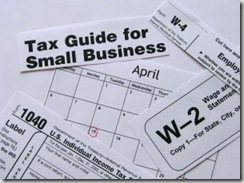For the past two days, BLR’s HR Daily Advisor has been looking behind enemy lines and providing tips from a plaintiffs lawyer on mistakes employers make that generate litigation (A Peek into Enemy Camp – Plaintiff’s Lawyer Spills Secrets and How to Grease the Skids for Your Employee's Attorney). I culled the following six from those articles, and are designed to point your business in the right direction with some proactive steps you can take to handle employees and policies and help avoid future employment claims.
1. Discounting damages and potential liability. Managers and supervisors often underestimate their own liability. People with decision-making authority need to keep in mind that in Ohio they can be held personally liable for their own discriminatory actions. It’s not just the company that can be held liable. If people stopped and considered that they could be equally liable for back wages, compensatory, and even punitive damages, they might tread more cautiously when dealing with protected employees.
2. Omitting a Reason for Termination. Companies often believe that it is better not to provide a reason for a termination than to give a reason that can be used as potential ammunition against the company. The converse is usually true. The lack of a reason is often the spark that fires the weapon. If an employee is not given a reason, he or she will assume that there is no good reason, and seek help from an attorney. However, if the employee is given a reason that is backed up by prior discipline, reviews, and other communications, the employee is much more likely to understand and move on. The keys are proper prior communication and accuracy.
3. Ignoring the EEOC Response. By ignoring, I don’t mean failing to respond at all (which is also a big mistake). Instead, I mean not taking the time to draft a thorough, proper, and accurate response that gives the EEOC or OCRC sufficient detail to issue a “no probable cause” finding. Be mindful of accuracy, however, as inconsistencies will likely come back to bite you in subsequent litigation.
4.Terminating Employees with Good Evaluations or Scant Documentation. It’s very difficult to justify the termination of an employee for performance problems if the employee has glowing performance reviews and no history of written documentation outlining the problems. The less paper that exists, the more a termination looks like pretext.
5. Ignoring Your Own Policies. Managers and supervisors should be trained in what your policies are and how they should be applied. While policies should state that they are not contracts, they do set standards of conduct that should be met in most cases. Consistency avoids the appearance of pretext, which in turn avoids summary judgment denials and jury trials.
6. Delaying Policy Changes. Laws change frequently. New laws are passed (the FMLA’s military leave amendments, the Genetic Information Nondiscrimination Act), old laws are changed (the new FMLA regulations and the recent ADA amendments), and courts write opinions that reinterpret laws (the Supreme Court’s inclusions of internal investigations in retaliation liability). Companies that are slow to react to incorporating these changes into their policies risk liability. Policies must be well drafted, reviewed by lawyers, and updated frequently.
There is no sure-fire method to prevent a lawsuit from being filed. No company is bulletproof, and there is no guarantee against a terminated employee filing a lawsuit. This list, however, is a good first step to helping put your organization in the best position to dissuade lawsuits from being filed and successfully defending against them when they are.

 lump-sum settlements or awards in one year. Critics argue that the former should not be taxed because it does not represent “wages.” Moreover, if the IRS does not tax noneconomic damages received on account of physical injury, why does it differentiate noneconomic damages received in discrimination cases. The latter greatly increases one’s tax liability by placing the employee in a higher-than-normal tax bracket based on the lump sum.
lump-sum settlements or awards in one year. Critics argue that the former should not be taxed because it does not represent “wages.” Moreover, if the IRS does not tax noneconomic damages received on account of physical injury, why does it differentiate noneconomic damages received in discrimination cases. The latter greatly increases one’s tax liability by placing the employee in a higher-than-normal tax bracket based on the lump sum.